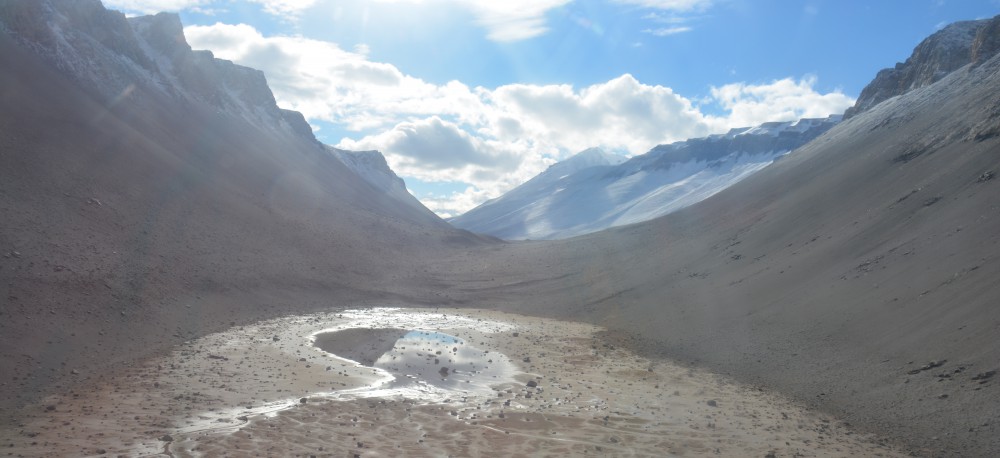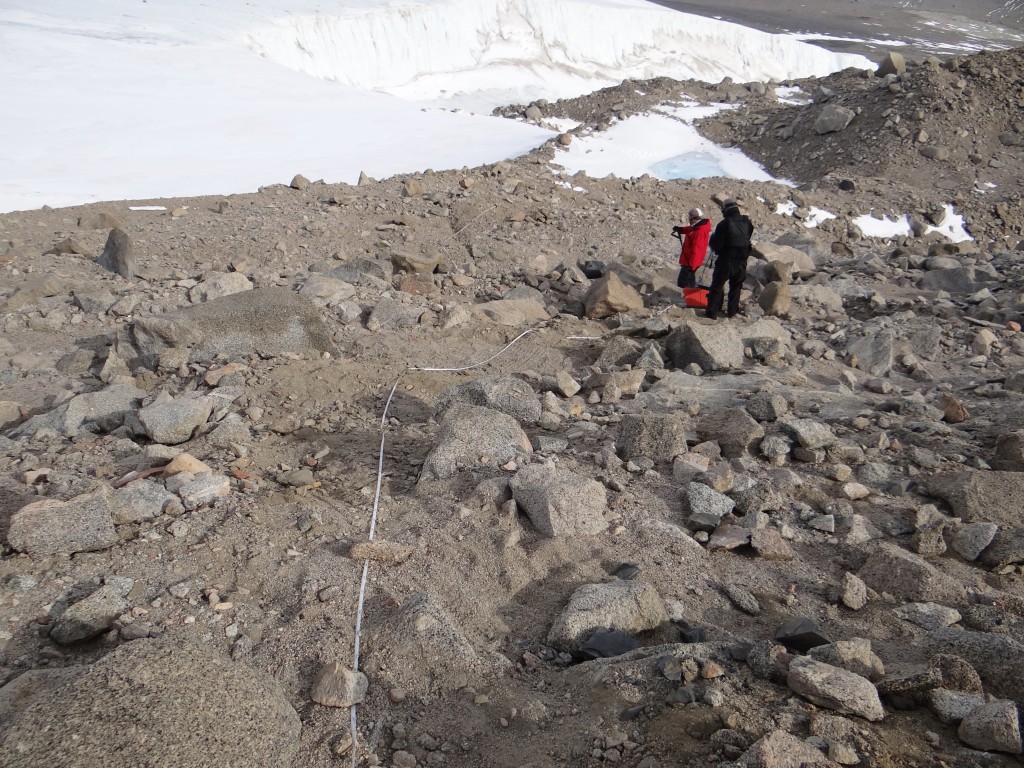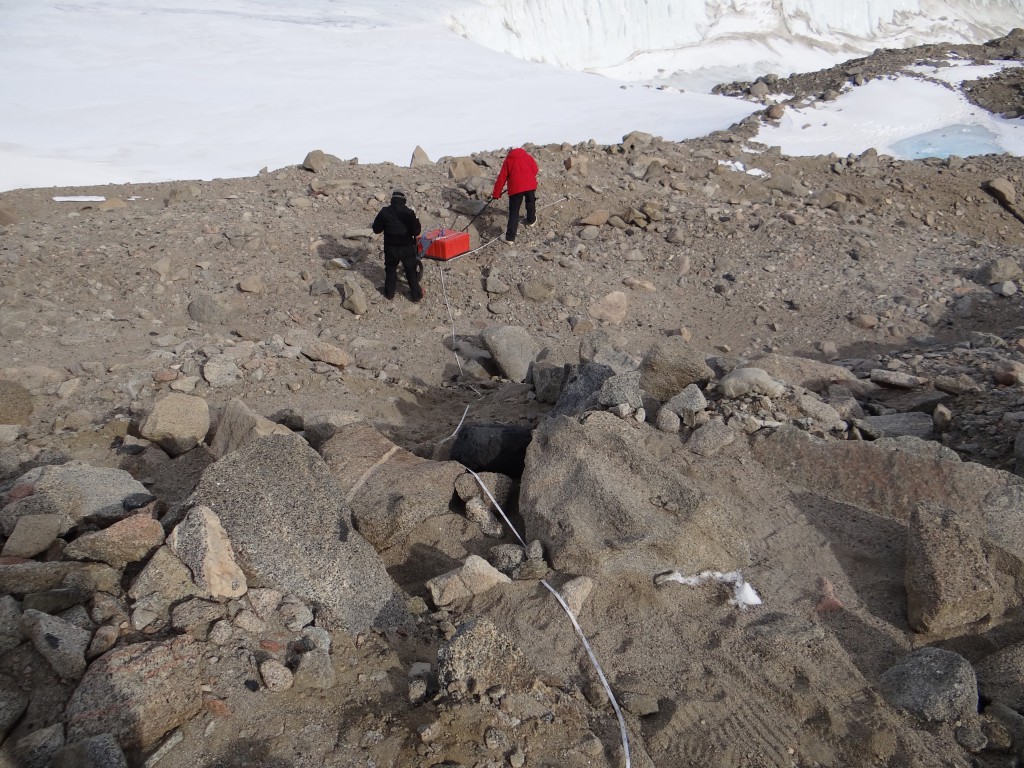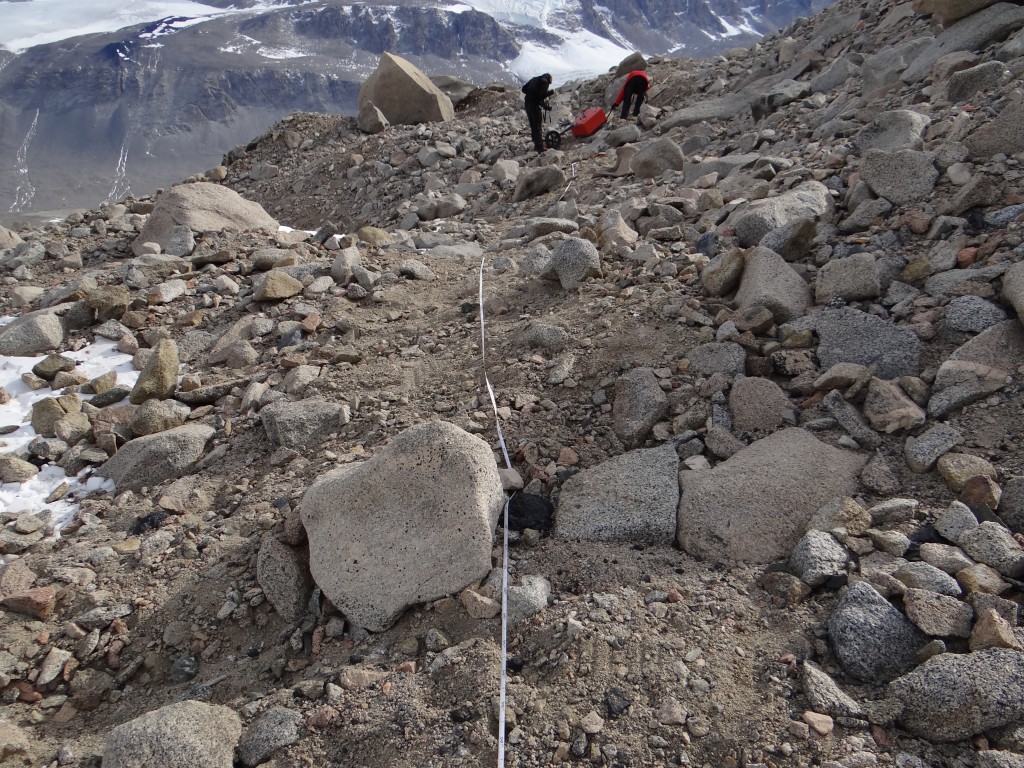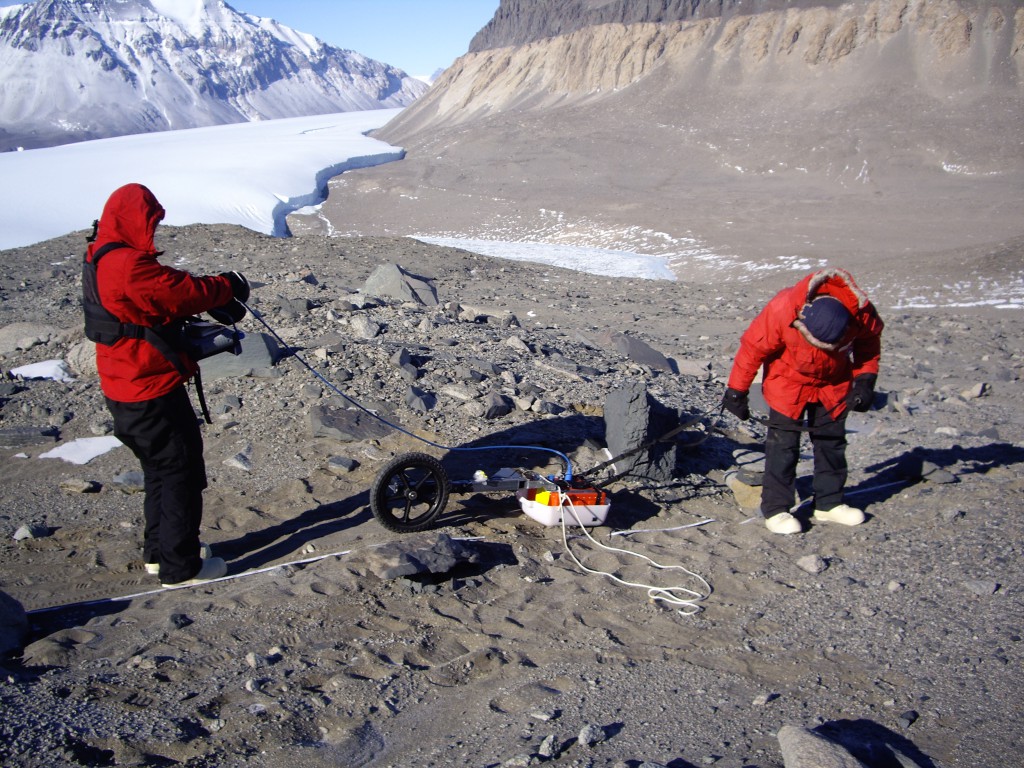Here’s another guest blog!
To the outside observer, some of our team’s actions over the past few weeks would seem quite bizarre. On certain days, we start by dragging out a long tape measure across the rocky ground. Next, the team moves along the tape measure and casts the surface rocks aside. Now, in the Dry Valleys, on the rock glaciers these rocks, as the name implies, cover almost the entire surface. Some rocks are big; some are small; and some are huge. With pickaxes, muscle power, and determination, we cast the rocks to the side to expose a primarily sandy surface. Rough calculations indicate that we move about ten thousand pounds of rocks for every three hundred feet we clear!
After the rock moving, the team drags an orange box along the ground in the cleared path. Generally one person drags the box from the front, while another person behind it guides its path. A third person carries a computer which is attached to the orange box via a long blue cable. As you may guess from the title of this post, the orange box is in fact a ground-penetrating radar antenna. As you may also guess from the description, the radar system operates at a frequency that allows the radar waves to penetrate into the ground. With some electrical engineering and computer wizardry, we can interpret the recorded results to estimate where subsurface objects and layers occur.
So why would we use this scientific tool in our research? Well, in many places we have cored into ice below the ground, or excavated soil pits to identify soil layers and “ice cement,” or frozen sediments. With the ground-penetrating radar results, we can sometimes extrapolate the individual ice core and soil results to identify larger area of ice and/or rock in the ground. By using the radar, we can survey larger areas the fewer intrusions into the ground. This approach saves time, effort, and money while providing valuable scientific information.
There is one final thing about the field work and data collection. An outside observer may think our final action during data collection is the strangest one. After we drag the orange antennas down the survey line, the team moves back down the line and throws the rocks back onto it. So first we move the rocks away, then afterwards we move the rocks back! This last step aims to reduce our environmental footprint by minimizing the signs of our survey. Although science is a vital part of the human quest for knowledge, we first and foremost aim to preserve this amazing continent, unspoiled, for future generations.
Finally:
Things I have learned in Antarctica:
- It’s best to leave some extra space in the top of your pee bottle. Then when the pee freezes and expands during the course of a day of field work, there is still available space in the top to pour in some boiling water to melt it once you arrive back at camp.
- Make friends with the helicopter pilots and technicians, and they may bring you fresh fruit once in a while. After five weeks in the field, fresh fruit is essentially manna from heaven. (Thank you Matt and Scott!!)
- After being worn for a week straight, socks emit a particularly foul odor. Do not dry your socks on the cook stove during dinner, or risk the wrath (and potential vomit) of your tent mates.
- Magazines from home are worth their weight in silver. When a package with magazines arrives in camp, the magazines are immediately and thoroughly investigated by all camp personnel. G-085 thanks their friends and family for all the mail; we love you!
- One must stake down the tents ten times as well as a newbie in Antarctica might suppose. Also, throw some rocks on the tent and on those stakes. Once you think there are enough rocks and stakes holding your tent down, add ten more rocks to each side. If you don’t secure the tent properly, Antarctica may treat you to the site of your tent blowing down valley in a wind storm, with all your belongings strewn behind it.
